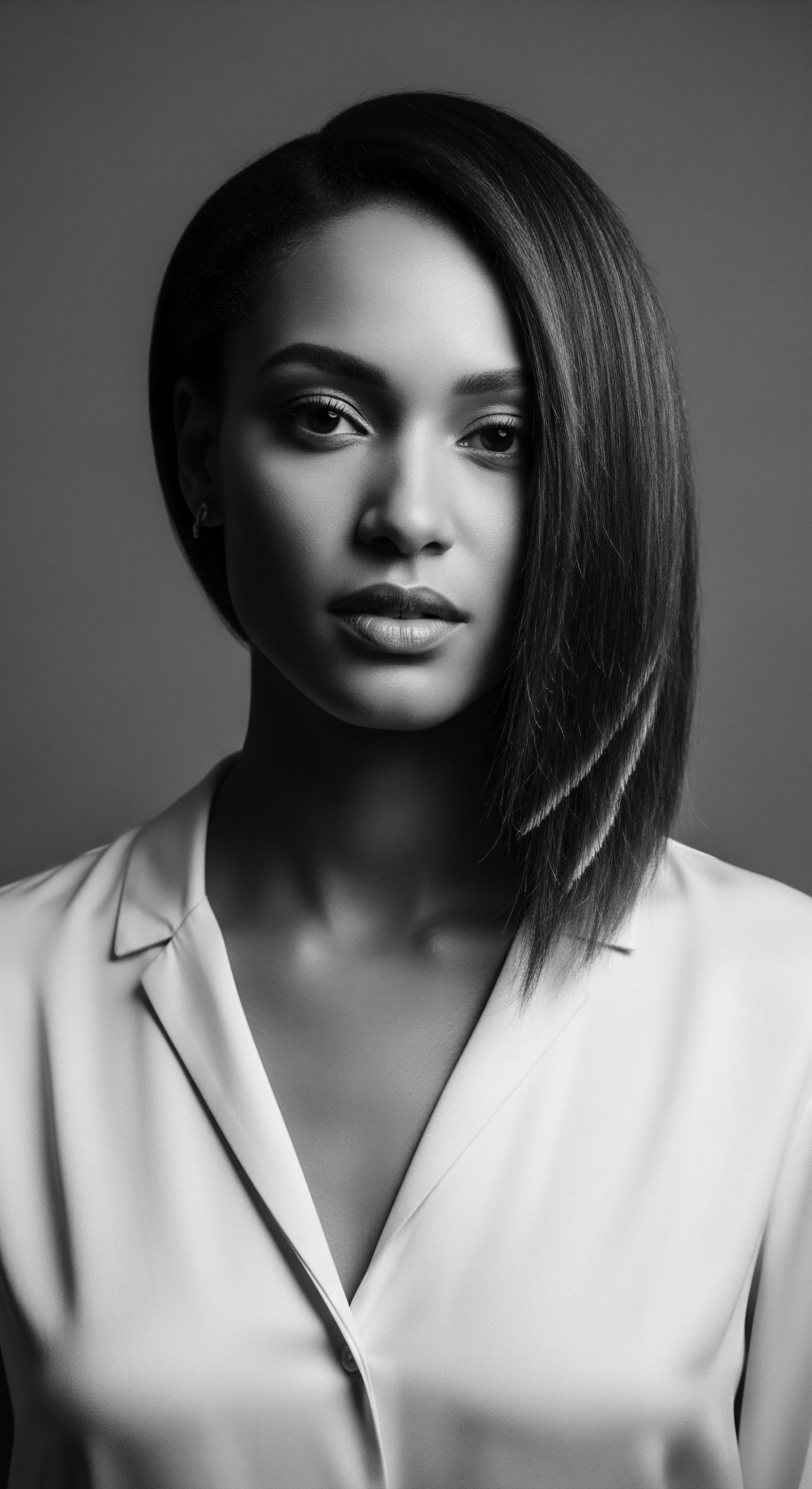
Roots
To truly comprehend how chemical relaxers cast their shadow upon the strands and scalp, one must first walk the winding path of textured hair heritage. It begins not with a chemical bottle, but with the very essence of identity, whispered through generations. For those whose ancestry traces back to the African continent, hair was never simply an adornment; it was a living chronicle.
It spoke of age, marital status, communal rank, even spiritual beliefs. The intricate artistry of ancient African hairstyles, often involving elaborate braids and threading, held deep cultural meanings and were passed down from elder to youth, an inheritance of wisdom and connection.
The coiled and kinky textures, often termed afro-textured hair, served as an evolutionary marvel, providing protection from the intense sun. Its unique spiraled structure allowed for air circulation to the scalp, a testament to nature’s ingenuity in adapting to environments. This legacy, however, met a brutal disruption during the transatlantic slave trade.
Hair, a vibrant symbol of identity, was forcibly shorn from enslaved Africans, a deliberate act of dehumanization intended to sever ties with their cultural origins and homeland. Stripped of traditional tools, oils, and the communal rituals of care, hair became matted and damaged, often hidden beneath scarves.
The imposition of Eurocentric beauty standards followed, where straight hair became the societal benchmark for acceptability, attractiveness, and even professional opportunity. This pressure was not subtle; it was a pervasive force. Within the Black community, a damaging hierarchy emerged ❉ “good hair” was perceived as straighter and softer, while “kinky” or “coarse” textures were relegated to the “bad hair” category. This deeply ingrained perception, often leading to economic and social disadvantages, fueled a desire to alter hair texture, creating a fertile ground for straightening methods to take root.
Textured hair is a living archive, its patterns and stories echoing ancestral resilience and identity.
The late 19th and early 20th centuries witnessed a surge in products designed to modify Black hair texture. While hot combs, reportedly created by Francois Marcel Grateau, gained popularity for smoothing hair, a more drastic alteration arrived with the chemical relaxer. Garrett Augustus Morgan Sr. an African American inventor, inadvertently discovered a formula containing lye that could loosen curly hair while working on sewing machines.
He launched G.A. Morgan’s Hair Refiner in 1913. This invention, initially marketed to both men and women, quickly found its primary audience in Black women, driven by prevailing beauty standards and the desire for easier manageability.

What is the Elemental Biology of Textured Hair?
At its elemental core, textured hair, particularly afro-textured hair, distinguishes itself through its unique follicular structure and the arrangement of disulfide bonds within the hair shaft. Unlike straight hair, which typically has a round cross-section, textured hair often exhibits an elliptical or oval cross-section. This shape contributes to the hair strand’s tendency to coil and curl.
The hair follicle itself curves, dictating the spiraling growth pattern of the strand. The cuticle layers, the protective outer scales of the hair, also lie differently, sometimes lifting more, which can affect moisture retention.
The disulfide bonds , strong chemical links between sulfur atoms in the hair’s protein structure (keratin), are the architects of hair’s natural curl. These bonds are numerous and strategically placed in textured hair, forming the intricate coils and kinks. When a chemical relaxer is applied, its primary purpose is to chemically alter these very bonds. This process is known as lanthionization or, more colloquially, “relaxing.” The chemicals work by breaking these strong sulfur bonds, softening the hair’s outer cuticle, and allowing the hair’s internal protein structure to be reformed into a straighter configuration.
The fundamental difference in how chemical relaxers impact textured hair compared to other hair types stems from the inherent nature of the hair itself. A tighter curl pattern means a greater density of disulfide bonds to break and reform, and a more delicate cuticle that can be easily compromised. This underlying biology makes textured hair particularly vulnerable to the harsh effects of these strong chemical agents.
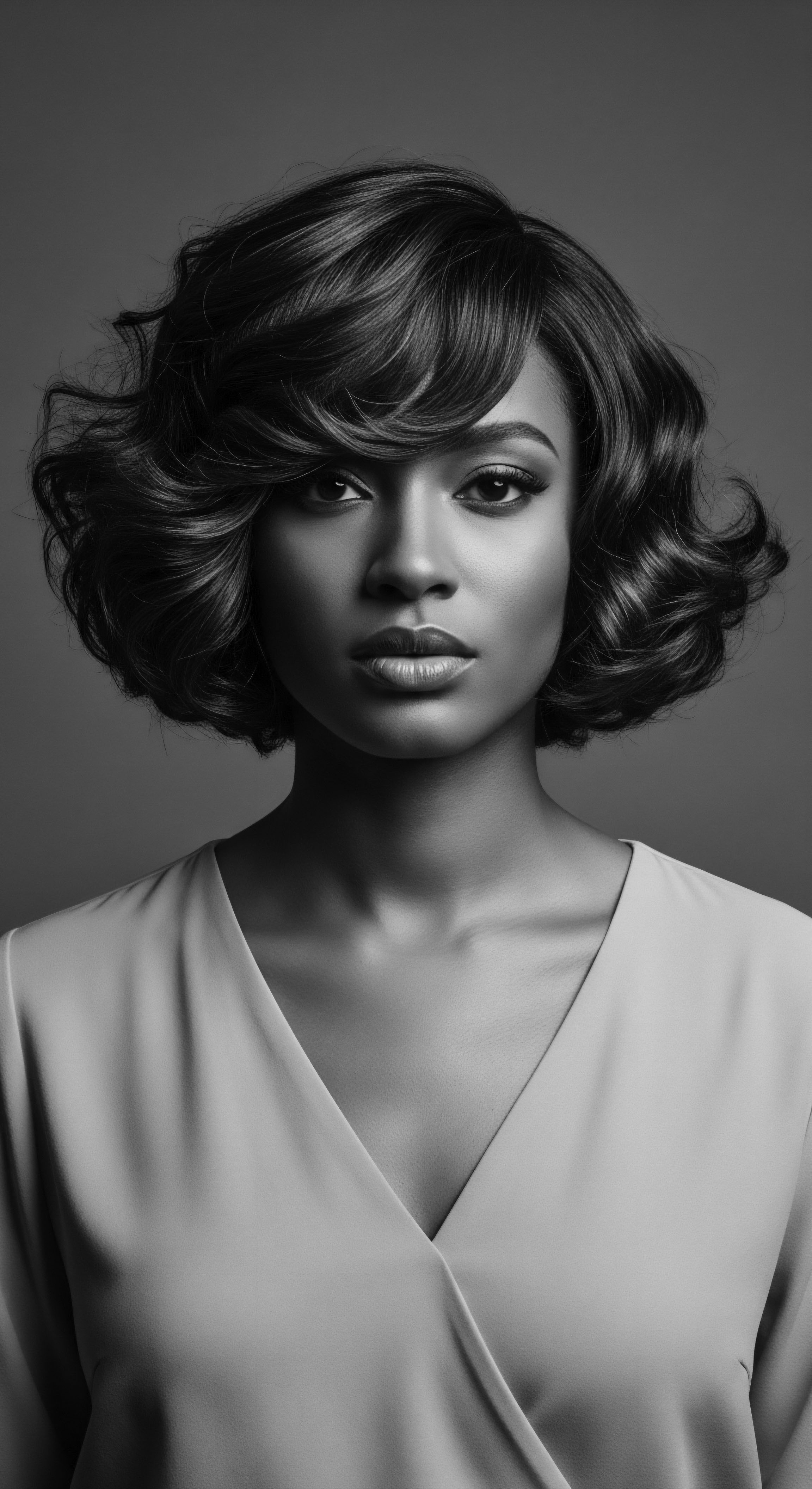
How do Chemical Relaxers Fundamentally Alter the Hair’s Structure?
Chemical relaxers work by initiating a powerful chemical reaction that reshapes the hair’s natural curl pattern. The active ingredients, most commonly sodium hydroxide (in “lye” relaxers) or a combination of calcium hydroxide and guanidine carbonate (in “no-lye” relaxers), are highly alkaline. These strong alkaline agents raise the pH of the hair, causing the hair shaft to swell and the outer cuticle layer to open. This open state allows the chemicals to penetrate the cortex, the innermost layer of the hair, where the disulfide bonds reside.
Once inside the cortex, the relaxer solution breaks the disulfide bonds that give hair its curl and strength. The process is a form of controlled chemical damage. As these bonds break, the hair’s natural shape is lost, and it becomes pliable. The hair is then smoothed into a straighter position, and the remaining broken bonds (or newly formed bonds in the case of thio relaxers, which are less common for permanent straightening) create a new, straighter structure.
This alteration is considered permanent for the treated hair. New growth from the scalp will retain its natural texture, necessitating periodic “touch-ups” every few weeks to maintain a consistent appearance.
| Method Hot Comb |
| Historical Context and Heritage Popularized in the late 1800s and early 1900s, this thermal method offered a way to achieve smoother styles. For many Black women, it was a tool for assimilation into societal norms, even if it caused scalp burns. |
| Chemical Impact on Hair Applies intense heat, which temporarily breaks hydrogen bonds in the hair. Repeated application can lead to heat damage, dryness, and breakage, particularly for textured hair. |
| Method Lye Relaxers (Sodium Hydroxide) |
| Historical Context and Heritage Introduced in the early 20th century by Garrett Morgan, these were revolutionary for their ability to chemically straighten hair. Their widespread adoption reflected a societal pressure for straightened styles. |
| Chemical Impact on Hair Highly alkaline, these agents permanently break disulfide bonds within the hair cortex. Known for powerful straightening but can cause severe scalp burns and dryness if not applied expertly. |
| Method No-Lye Relaxers (Calcium Hydroxide/Guanidine Carbonate) |
| Historical Context and Heritage Developed to be gentler on the scalp, these alternatives became common. Yet, their prevalence still speaks to the enduring cultural desire for straightened hair. |
| Chemical Impact on Hair Work by breaking disulfide bonds, similar to lye relaxers, but with a different chemical base. While marketed as less irritating to the scalp, they can cause calcium buildup and hair dryness. |
| Method Understanding these methods allows a deeper appreciation of the choices and challenges faced by those seeking to alter their textured hair through time, each choice echoing a complex heritage. |
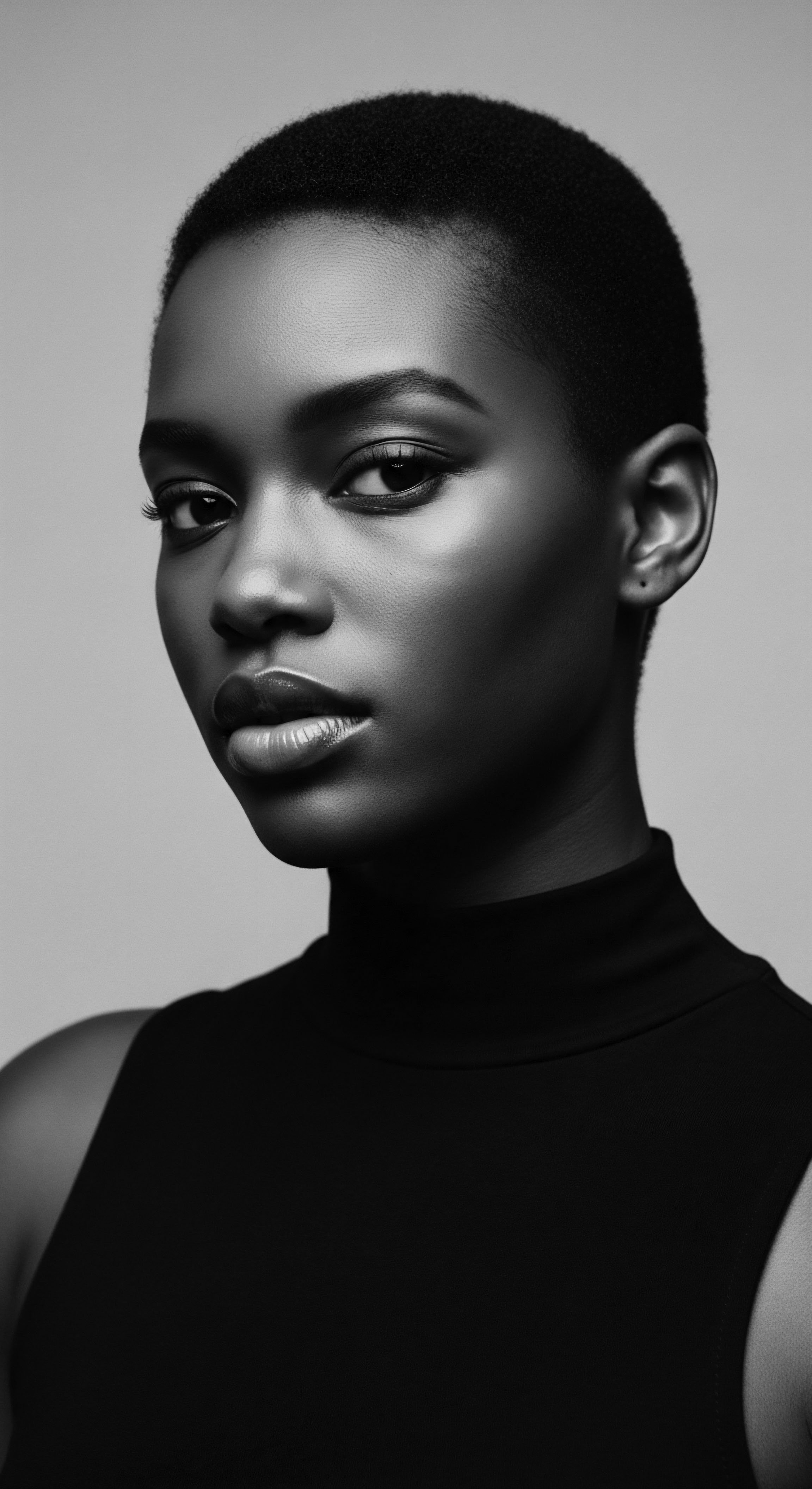
Ritual
The act of chemically relaxing textured hair often became a deeply ingrained ritual, a scheduled appointment not just with a stylist, but with a particular aesthetic and, for many, a certain societal expectation. This ritual transcends mere hairstyling; it reflects a nuanced history of adaptation and aspiration within Black and mixed-race communities. For decades, the pursuit of straightened hair was intertwined with perceptions of professionalism and beauty, a consequence of Eurocentric beauty standards that permeated society.
From the mid-20th century, relaxers became a common practice, with some women beginning treatments as young as five years old. This regular application, often every 4 to 8 weeks as new growth emerged, perpetuated a cycle of chemical exposure. The hairstyling process itself, while sometimes a moment of shared community in salons, often carried the underlying tension of discomfort—the inevitable scalp burning described by many.
The enduring commitment to hair relaxation underscores a history of societal pressure and aesthetic adaptation.

What are the Immediate and Long-Term Consequences for Hair?
The immediate impact of chemical relaxers on hair is a dramatic alteration of its natural structure. The strong alkaline chemicals swell the hair shaft, open the cuticle, and permanently break the disulfide bonds. This process leaves the hair in a weakened state, often stripped of its natural oils. Immediately following a relaxer, the hair can feel smooth and straight, but this comes at a cost to its inherent strength and elasticity.
The long-term consequences are more insidious and pervasive. Repeated exposure to these harsh chemicals, particularly as new growth is treated, can lead to chronic damage.
- Brittleness and Breakage ❉ The hair’s compromised internal structure makes it highly susceptible to breakage. Even routine styling can cause significant damage.
- Dryness and Dullness ❉ The chemical process can strip the hair of its natural moisture, leading to persistent dryness and a lack of luster. Calcium buildup from no-lye relaxers can exacerbate this issue.
- Thinning and Hair Loss ❉ Overlapping relaxer applications on previously treated hair, or leaving the chemical on for too long, can cause severe weakening and lead to hair thinning and even widespread alopecia. Traction alopecia, in particular, affects Black women at a statistically higher rate, and relaxers contribute to hair fragility.
- Loss of Natural Curl Pattern ❉ This is, of course, the intended effect, but it means that the hair’s natural ability to coil and form its inherent patterns is permanently altered.
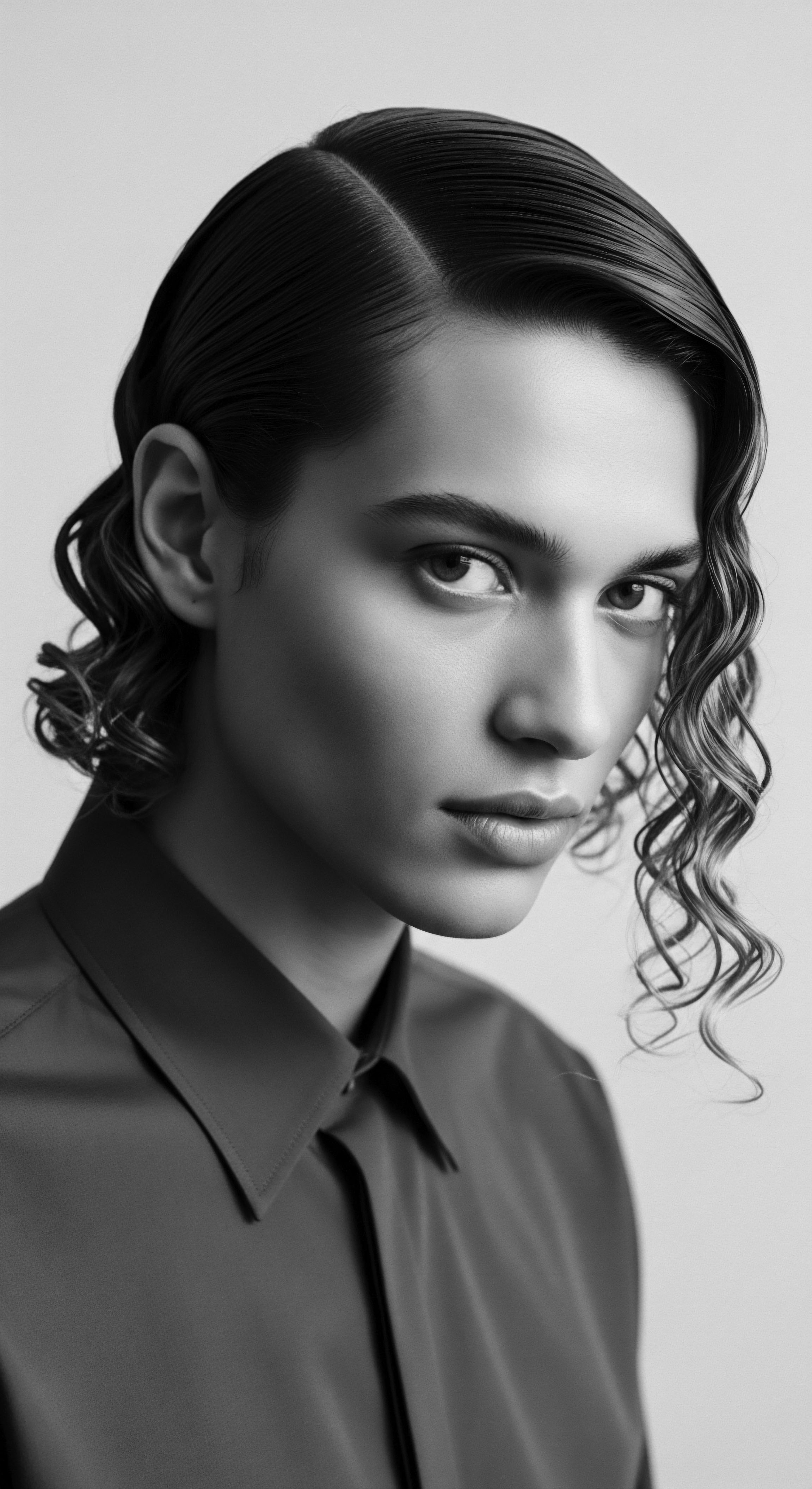
How do Chemical Relaxers Compromise Scalp Integrity?
Beyond the hair strand itself, the scalp, the very ground from which our heritage grows, bears a significant brunt of chemical relaxer exposure. The chemicals in relaxers are potent and corrosive.
The scalp, being a permeable surface, is highly susceptible to the direct application of these strong chemicals.
- Chemical Burns and Irritation ❉ A ubiquitous experience for many who have used relaxers is the sensation of burning on the scalp. This can range from mild irritation to severe chemical burns, often leaving lesions or open wounds.
- Compromised Scalp Barrier ❉ The protective barrier of the scalp can be significantly damaged, making it more vulnerable to infections, inflammation, and further chemical absorption.
- Hair Follicle Damage ❉ Repeated burns and irritation can harm the hair follicles, the tiny organs responsible for hair growth. This can lead to permanent damage, hindering healthy hair production and contributing to hair loss.
- Increased Chemical Absorption ❉ Scalp lesions and burns create pathways for the harmful chemicals to enter the bloodstream, a concerning aspect often overlooked in the immediate visible effects.
The choice between “lye” (sodium hydroxide) and “no-lye” (calcium hydroxide/guanidine hydroxide) relaxers, while often presented as a choice for scalp sensitivity, carries its own set of trade-offs. Lye relaxers are known to be harsher on the scalp, but can be less drying to the hair itself if applied correctly. No-lye relaxers are marketed as gentler on the scalp, yet they frequently cause significant hair dryness due to calcium buildup. Neither option is without substantial risk to scalp health.
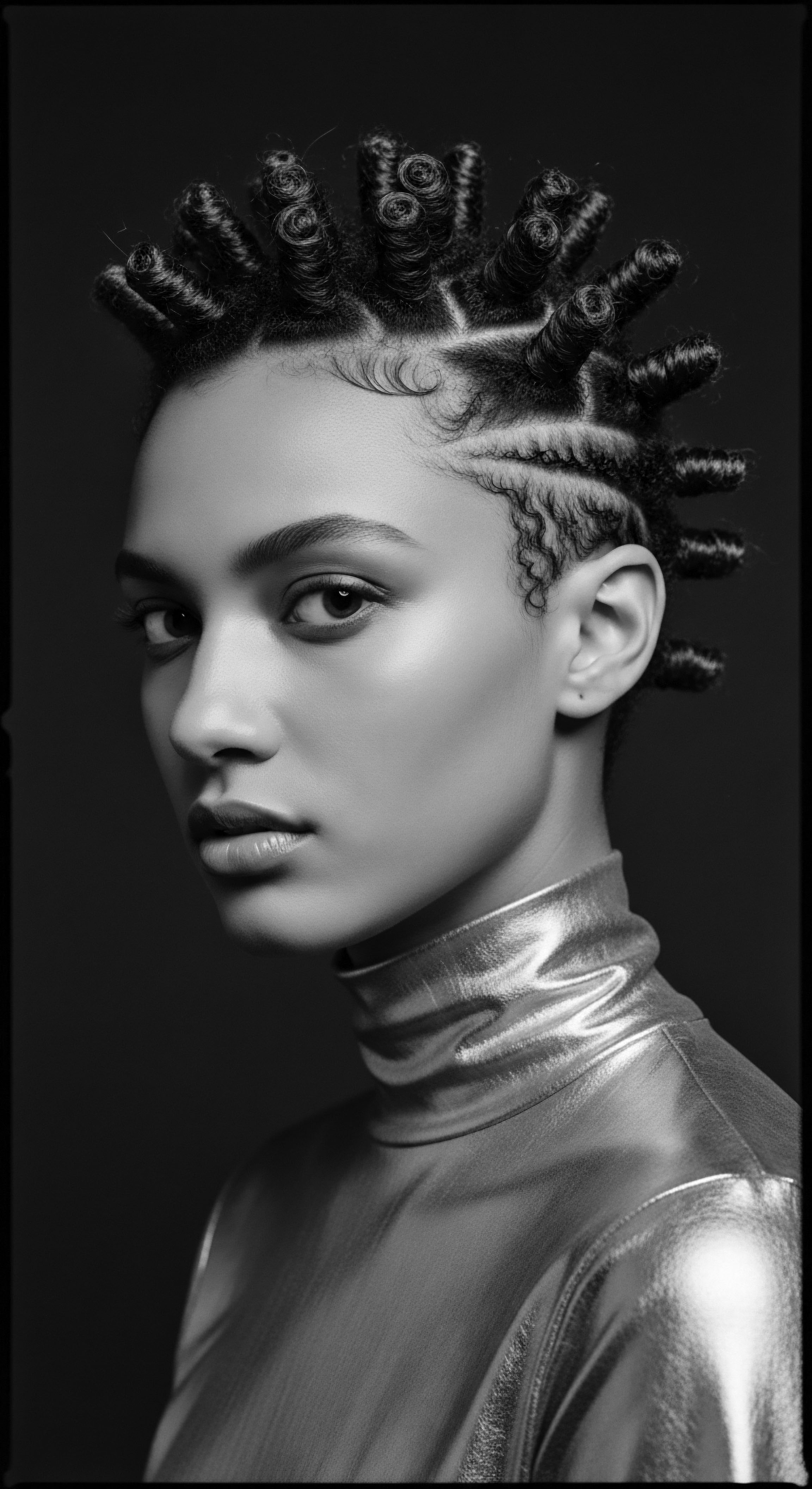
Relay
The conversation surrounding chemical relaxers is not contained within the realm of individual hair health; it expands into a broader discourse on public health, societal pressures, and the enduring legacy of beauty standards deeply rooted in heritage. For generations, the smooth, straightened aesthetic was presented as an ideal, a marker of acceptability and professionalism within a society that often marginalized textured hair. This narrative, sometimes subtle and sometimes overt through advertising campaigns, shaped choices for countless Black and mixed-race individuals.
A significant shift in understanding has gained momentum in recent years, propelled by scientific inquiry and the collective experience of those who have navigated the world of chemical straightening. The focus has widened from visible hair damage to more profound, systemic health implications.
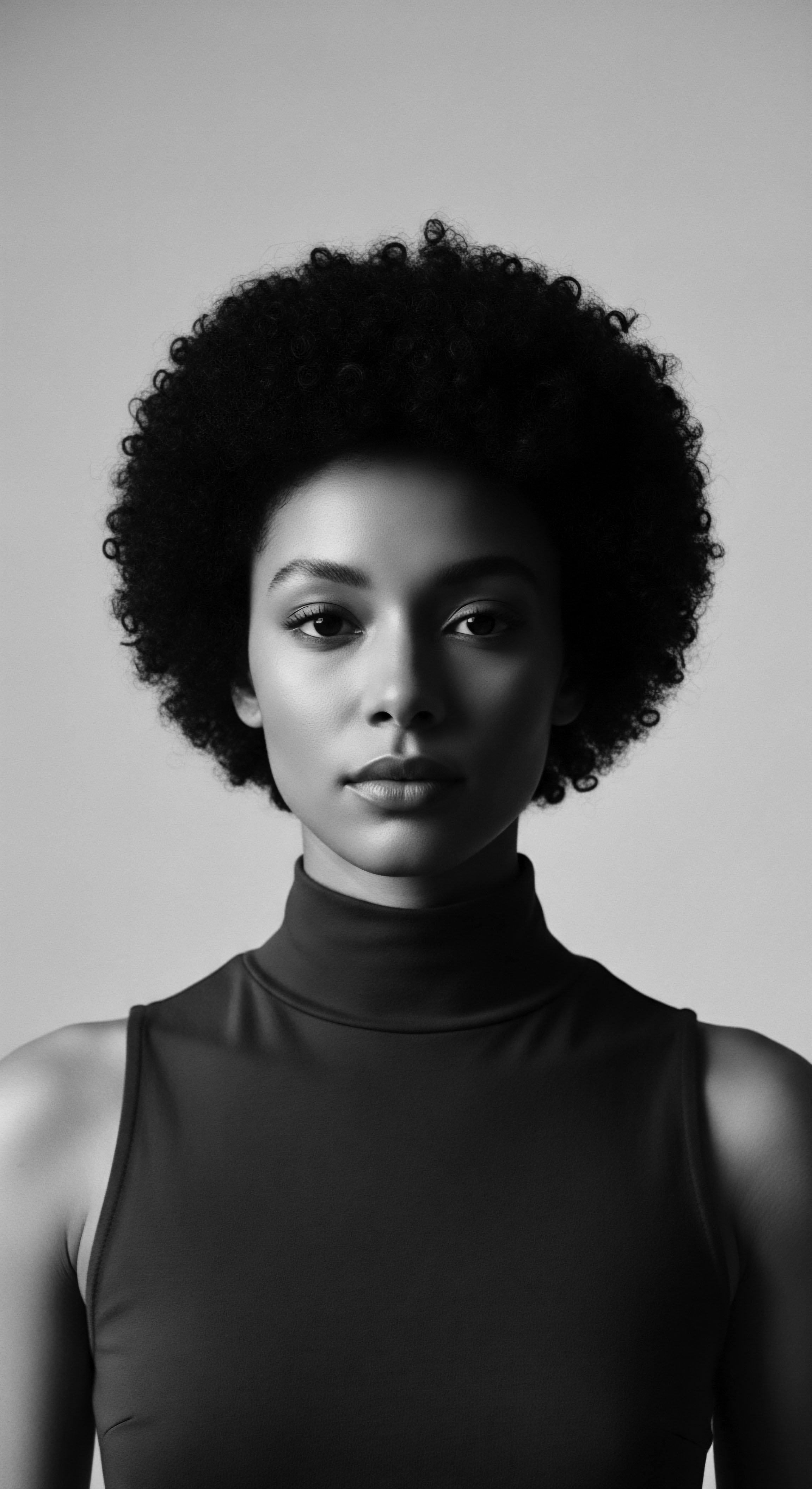
What are the Systemic Health Concerns Linked to Chemical Relaxers?
Beyond the immediate and visible effects on hair and scalp, a growing body of scientific evidence points to systemic health concerns linked to the long-term, repeated use of chemical relaxers. The chemicals present in these products, such as phthalates, parabens, and formaldehyde-releasing agents , are identified as endocrine-disrupting chemicals (EDCs) . EDCs are substances that can interfere with the body’s hormonal balance, potentially leading to a cascade of health issues.
One particularly alarming area of research concerns the disproportionate impact on Black women. For instance, Black women are three times more likely to develop uterine fibroids than women of other racial groups, often at an earlier age and with more severe symptoms. Studies have illuminated a compelling connection between hair relaxer use and an increased risk of these non-cancerous uterine tumors.
A 2012 study, the Black Women’s Health Study , which followed 23,580 premenopausal women, found that those who used hair relaxers were 17% more likely to develop fibroids. More frequent usage, such as seven times a year, correlated with a 1.4 times higher risk.
The concern does not end with fibroids. Research has also linked chemical relaxer use to an increased risk of certain cancers.
- Breast Cancer ❉ Studies have suggested a correlation between frequent use of chemical hair straighteners and a higher risk of breast cancer.
- Uterine Cancer ❉ A study from the U.S. National Institutes of Health in October 2022 indicated that women using hair relaxers more than four times a year were at a higher risk of developing uterine cancer. This study estimated that the risk of uterine cancer increased from 1.64% for non-users to 4.05% for frequent users by age 70.
- Ovarian Cancer ❉ Some research points to a link between chemical relaxers and an increased risk of ovarian cancer.
The absorption of these chemicals into the body occurs through the scalp, particularly when chemical burns or lesions are present, providing a direct pathway into the bloodstream. This quiet, continuous exposure over decades, often beginning in childhood, contributes to the severity of these systemic health concerns.
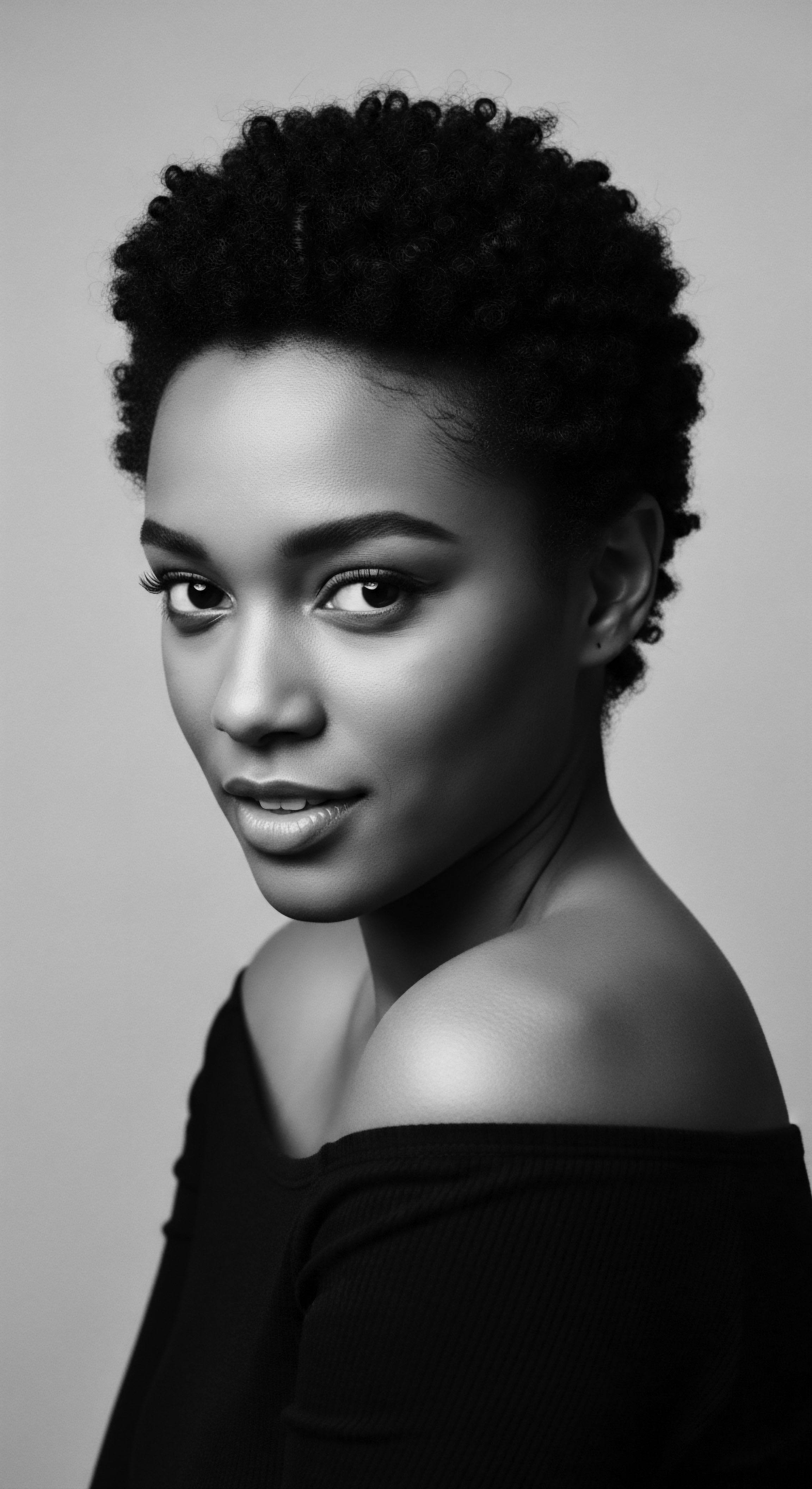
How does Heritage Inform Our Alternatives and Future Practices?
The growing awareness of the health risks associated with chemical relaxers has spurred a powerful re-examination of hair care practices, deeply rooted in the concept of ancestral wisdom and heritage. The natural hair movement, which gained significant momentum in the 2000s and stands as an extension of the Civil Rights and Black Power movements of the 1960s, champions the embracing of afro-textured hair in its natural state. This movement is a reclamation of identity, a rejection of imposed beauty standards, and a return to practices that honor the inherent beauty and resilience of textured hair.
Ancestral practices offer a rich repository of knowledge for alternatives to chemical treatments. Before colonization, African societies utilized natural ingredients for hair care, focusing on moisture retention, strength, and scalp health.
Some of these ingredients include:
- Shea Butter ❉ Used for centuries across Africa, it is packed with vitamins A and E and essential fatty acids, offering incredible moisturizing and sealing properties.
- Marula Oil ❉ Often called “The Tree of Life” oil, it is rich in antioxidants and fatty acids, protecting against dryness and breakage.
- Aloe Vera ❉ A staple in hair care, it soothes the scalp, aids with dandruff, and provides significant hydration and shine.
- Chebe Powder ❉ A traditional hair care remedy from Chad, consisting of herbs and seeds, known for increasing hair thickness and retaining moisture.
- Rhassoul Clay ❉ Originating from Morocco, this clay is excellent for removing impurities and product buildup while preserving natural oils.
These traditional ingredients and practices highlight a holistic approach to hair care that aligns with overall wellbeing, recognizing hair as a sacred part of self. The contemporary natural hair movement, while embracing modern scientific understanding, often seeks to validate and integrate this ancestral wisdom, promoting practices that support healthy hair growth without compromising systemic health. The focus is now on nurturing the hair’s natural state, understanding its unique needs, and celebrating its inherent beauty, a journey that deeply connects present choices to a profound cultural heritage.
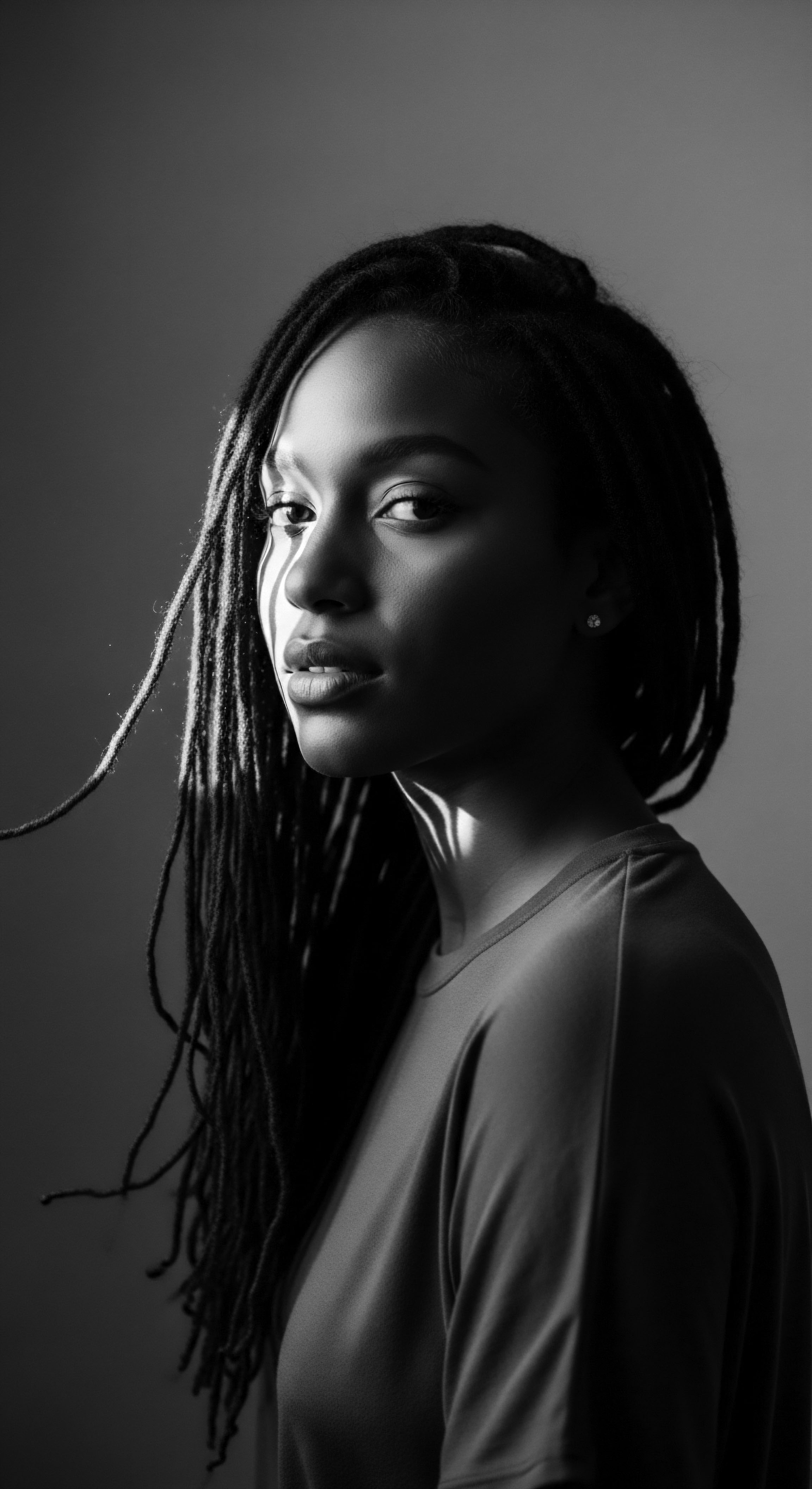
Reflection
The journey through the intricate world of chemical relaxers and textured hair is a testament to the enduring spirit of heritage. It is a story not just of chemical reactions and biological responses, but of cultural pressures, personal choices, and the profound resilience found within Black and mixed-race communities. The very fibers of textured hair carry echoes of ancient practices, of communal care under the sun, and of the wisdom passed down through generations, long before the advent of modern chemical interventions. The impact of relaxers, both seen and unseen, compels us to look inward, to the core of our being, and outward, to the systems that have shaped our beauty ideals.
As we stand at this moment, with growing scientific understanding and a revitalized appreciation for natural textures, there is a powerful call to honor the innate strength and beauty of every coil, kink, and wave. This is a return to source, a conscious decision to listen to the whispers of ancestral wisdom that remind us of ingredients and practices that nourish, rather than diminish. The path ahead invites us to redefine beauty on our own terms, to shed the weight of external validation, and to celebrate the authentic splendor of textured hair as a profound expression of self and a living, breathing testament to our shared heritage. This embrace allows each strand to tell its unfettered story, contributing to a vibrant, unbound helix of identity.

References
- Refinery29. The Evolution Of The Natural Hair Movement. 2021.
- The Impact of Hair Relaxer Lawsuits ❉ Unveiling the History and Harmful Chemicals.
- The Commonwealth Times. The oppressive roots of hair relaxer. 2011.
- Black Skin Directory. Hair Relaxers, Cancer Risks and Black Women’s Health. 2025.
- Wise, L.A. et al. Hair Relaxer Use and Risk of Uterine Leiomyomata in African-American Women. American Journal of Epidemiology, 2012.
- Dermnet. What Every Dermatologist Must Know About the History of Black Hair. 2023.
- Harvard T.H. Chan School of Public Health. Uncovering the dangers of hair products marketed to Black women, girls. 2024.
- The Kurl Kitchen. The Cultural Significance Of Natural Hair In Different Communities. 2024.
- Ash T. Relaxers, A Retrospective. BlackBeautyPop. 2024.
- Wikipedia. Relaxer.
- From Nature With Love. African Skin and Hair Care Ingredients.
- Design Essentials. Knowing Different Types of Hair Relaxers.
- Drugwatch. Black Hair Relaxers ❉ Hidden Dangers and Fibroid Connections. 2023.
- Katherine Haircare. This Homemade Afro Hair Product is 10x Better than Just Shea. 2025.
- MUDMASKY US. Why relaxers damage your hair and 5 tips to recover from hair damage. 2023.
- GirlsOnTops. A Sacred Legacy ❉ On Black Hair And The Revolutionary Power of Self-Exp. 2020.
- Umthi. The Cultural Significance and Representation of Afro-Textured Hair. 2023.
- Rosenfeld, E. Hair Relaxer Uterine Fibroids Lawsuit. 2025.
- Vitale Pro. Chemical Hair Relaxer ❉ What You Need to Know Before You Go. 2025.
- The History of Chebe Powder ❉ An Ancient African Hair Secret for Hair Growth. 2025.
- Patient.info. What’s the link between hair relaxers and fibroids? 2023.
- Vitale Pro. The Evolution of Hair Relaxers ❉ What’s New in 2024? 2024.
- Wilcox, A. Femininity, Hair Relaxers, and the Impact of Beauty Standards on Black Women’s Health. 2017.
- HairClub. Get the Facts About Chemical Relaxers & Hair Loss.
- Drugwatch. The Serious Health Risks of Hair Relaxers.
- LifeLong Medical Care. Hair Relaxers Harming Black Women Go Largely Unregulated. 2024.
- Oxford Research Encyclopedia of American History. Black Women and Beauty Culture in 20th-Century America. 2017.
- Reddit. Avlon affirm hair relaxer (lye or no lye). 2024.
- The Diamondback. The evolution of textured hair care and styling, a brief history. 2022.
- Natalie Mochaccino. Lye vs No Lye Relaxers ❉ What’s the Difference Between Them? 2023.
- Drugwatch. Chemical Hair Relaxers & Their Growing Health Concerns.
- Odele Beauty. 6 Things Everyone Should Know About Black Hair History. 2021.
- Capital B News. As Many Black Women in U.S. Abandon Hair Relaxers Linked to Cancer, Sales Climb in African Countries. 2024.
- Samuel’s Science. Gentle Treatment No-Lye Relaxers vs. 2024.
- Black Past. A Definitive Timeline of the Black Hair Journey ❉ 8 Historic Moments to Remember.
- EBSCO Research Starters. Afro-textured hair.
- Africa Imports. Traditional African Secrets For Long And Healthy Hair.
- Wikipedia. Natural hair movement.
- Byrdie. It’s Time to Learn the History Behind The Silk Press. 2022.
- Worldofbraiding Blog. HOW CHEMICAL RELAXERS AFFECT YOUR HAIR. 2011.
- Diane Da Costa. History of the Natural Texture Hair Movement.
- Folklife Magazine. It’s More Than “Just” Hair ❉ Revitalization of Black Identity. 2022.
- Kilburn & Strode. Afro-texture ❉ a hair-story. 2021.
- Formula Botanica. 10 Natural African Skincare Ingredients. 2021.
- PubMed Central. Historical Perspectives on Hair Care and Common Styling Practices in Black Women. 2025.
- African American Museum of Iowa. History of Hair.
